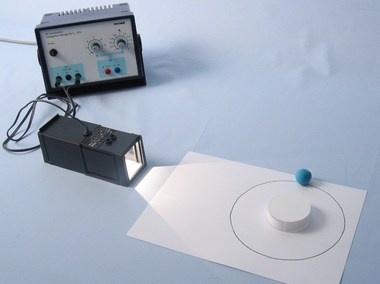
Technical data Solar and lunar eclipses (with the light box)Article no: P1063500  Principle In the experiment on "shadow formation" the students investigated the origin of umbra and penumbra. In doing so they determined that areas of shadow only occur behind illuminated opaque objects and that the rectilinear propagation of light is one of the reasons for shadow formation. Benefits
Tasks How do eclipses of the moon or the sun occur? The aim of this experiment is to investigate how eclipses of the moon and the sun occur. Scope of delivery
| |||||||||
Robert-Bosch-Breite 10 – 37079 Göttingen – Germany
www.phywe.com

